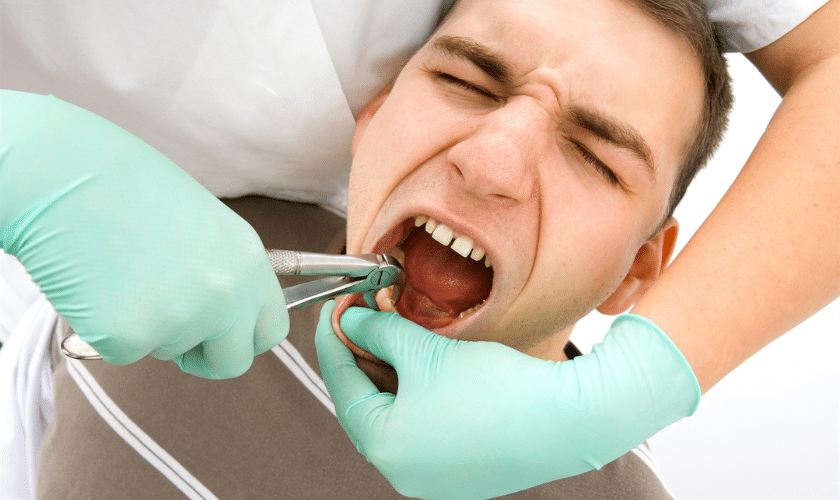Tooth extractions can be a bit unsettling, especially when it comes to managing the bleeding afterward. Whether you’re dealing with a simple extraction or a more complex procedure, knowing how to handle bleeding can make all the difference in your recovery. This guide will walk you through practical steps to control bleeding and promote healing effectively.
First things first, staying calm and knowing what to do immediately after the extraction is crucial. By following expert tips and understanding what’s normal, you can manage the situation with confidence. From using gauze correctly to making simple lifestyle adjustments, this blog will cover everything you need to know to ensure a smooth recovery.
Let’s dive into the best practices for controlling bleeding and getting back on track to a healthy smile!
What to Expect After Tooth Extraction?
Understanding what happens after a tooth extraction can help you manage expectations and reduce anxiety. After the procedure, it’s normal to experience some bleeding and discomfort. The blood clot that forms in the extraction site is crucial for healing. It’s essential to protect this clot to prevent complications.
Immediate Post-Extraction Care
- Bite on Gauze: Apply gentle pressure by biting down on a gauze pad placed over the extraction site. This helps stop the bleeding and promotes clot formation.
- Avoid Spitting: Refrain from spitting or rinsing your mouth vigorously. These actions can dislodge the blood clot and delay healing.
- Elevate Your Head: Keep your head elevated, even while resting. This helps reduce blood flow to the area, which can lessen bleeding.
Managing Bleeding at Home
- Cold Compress: Apply a cold compress to your face near the extraction site. This can reduce swelling and constrict blood vessels, slowing down bleeding.
- Hydrate and Eat Soft Foods: Stick to soft foods and plenty of fluids to avoid irritating the extraction site. Avoid hot, spicy, or crunchy foods that could disturb the area.
When to Contact Your Dentist?
- Excessive Bleeding: If bleeding persists beyond a few hours or if it’s heavy, contact your dentist immediately. They can assess whether there’s an issue with clot formation.
- Persistent Pain: While some discomfort is normal, severe pain or swelling could indicate complications. Seek professional advice if these symptoms worsen.
Avoiding Common Mistakes
- Don’t Smoke: Smoking can hinder the healing process and increase the risk of complications. Avoid smoking or using tobacco products for at least 48 hours after the extraction.
- Avoid Strenuous Activity: Refrain from heavy exercise or physical exertion for the first 24-48 hours. This helps prevent additional bleeding and aids in faster healing.
Tips for a Smooth Recovery
- Follow Post-Op Instructions: Adhere to the specific instructions provided by your dentist or oral surgeon. This includes taking prescribed medications and following any dietary recommendations.
- Maintain Oral Hygiene: Gently brush and floss your teeth, but avoid the extraction site until it has fully healed. Keeping your mouth clean can help prevent infection.
Long-Term Care for the Extraction Site
- Monitor Healing: Keep an eye on the extraction site for any unusual changes or symptoms. Healing typically takes a few weeks, but your dentist will provide a timeline specific to your case.
- Regular Check-Ups: Schedule follow-up appointments with your dentist to ensure proper healing and address any concerns. Regular check-ups can help catch any potential issues early.
Controlling bleeding after a tooth extraction is essential for a smooth recovery. By following these expert tips, you can manage bleeding effectively and avoid complications. Remember to stay calm, use gauze properly, and follow post-procedure instructions closely. If bleeding persists or you experience unusual symptoms, don’t hesitate to contact your dentist. Proper care and attention will help you heal faster and return to your normal routine with minimal discomfort.




